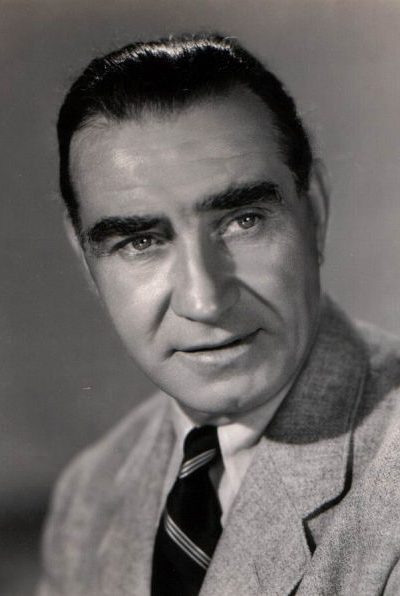Frank Lloyd
DirectorBiografía
Frank Lloyd was an unpretentious, technically skilled director, who crafted several enduring Hollywood classics during the 1930’s. He started out as a stage actor and singer in early 1900’s London and was well-known as an imitator of Harry Lauder. After several years in music hall and with touring repertory companies, Lloyd emigrated to Canada in 1909 and joined the travelling theatrical troupe of Winnipeg entrepreneur C.P. Walker. In between acting, he made ends meet by working as a repair man on telegraph lines. While in Edmonton, Alberta, he met and married the German-American soubrette Alma Haller. Lloyd spent several months on the vaudeville circuit and in burlesque shows on the West Coast before marking his arrival in Hollywood with an acting contract at Universal in 1913. After two years of consistently poor critical notices, he gave up the acting profession for good and turned his skills to writing and directing. In two years at Fox, 1917-19, he directed some fifteen films, often starring the popular matinée idol William Farnum. The majority were Zane Grey westerns (including an early version of Riders of the Purple Sage (1918)) and adaptations of classic literature (such as A Tale of Two Cities (1917) and Les Misérables (1917)). After a spell with Samuel Goldwyn, Lloyd joined First National/Warner Brothers (1922-31) and became the resident specialist in period drama and swashbuckling adventure. As his reputation grew, he was given charge of his own production unit. Among his most famous films during this period are Oliver Twist (1922), with Jackie Coogan in the title role and Lon Chaney as Fagin; The Eternal Flame (1922), a historical drama based on a novel by Honoré de Balzac; and The Sea Hawk (1924), with Milton Sills. In 1929, Lloyd became the second director to receive a coveted Academy Award, for The Divine Lady (1929), one of three films for which he had been nominated. Much of Lloyd’s acclaim is based on his work during the 1930’s. At Fox (1931-34), he directed Noël Coward’s Cavalcade (1933), and the historical fantasy Berkeley Square (1933) — both with meticulous attention to geographic and period detail. Immensely popular at the box office, the former won Lloyd his second Oscar and returned $ 5 million in grosses from a production cost of $1.25 million. ‘Berkeley Square’ was described by the New York Times as “an example of delicacy and restraint” and “in a class by itself” (September 14, 1933). Lloyd’s brief stint at MGM in 1935 culminated in the greatest success of his career. Mutiny on the Bounty (1935) won the Best Picture Oscar in its year and heaped praise on the director for maintaining strong narrative cohesion throughout, and for eliciting superb performances from stars Clark Gable (as Fletcher Christian) and Charles Laughton (as Captain Bligh). Lloyd continued in the same vein with the rollicking Foreign Legion adventure Under Two Flags (1936) and the sweeping (though historically inaccurate), big budget western epic Wells Fargo (1937). Also at Paramount, and, once again with his own production unit , he filmed the romantic story of adventurer-poet François Villon, If I Were King (1938), with excellent production values and superb acting from Ronald Colman and Basil Rathbone. After completing a two-year contract at Columbia (1940-41), Lloyd served in World War II in command of the 13th Air Force Combat Camera Unit, turning out short documentaries. He rose to the rank of major and was decorated with the Legion of Merit. After the war, he temporarily retired to life on his Carmel Valley ranch, but made a brief comeback after the death of his wife Alma. His swan song for Republic Studio was the story of the Battle of the Alamo, The Last Command (1955), a suitably-titled finale to the career of one of the great action directors of the period. Lloyd has a star on the Walk of Fame on Hollywood Boulevard.

